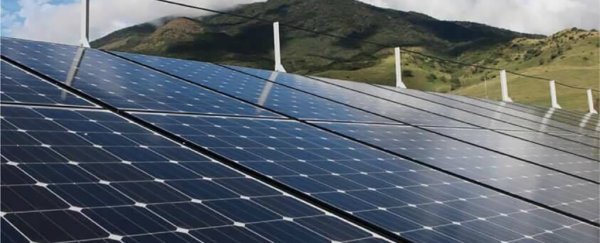A round of applause for Costa Rica: the small Central American country ran solely on renewable energy for 250 days of 2016, and over the whole year used renewables for 98.12 percent of its electricity needs.
The republic uses a mixture of renewable sources to generate its electricity including hydro, geothermal, wind, biomass, and solar energy, which meant it didn't need to touch fossil fuels for two-thirds of the year.
The biggest renewable contributor is hydroelectric plants, which account for 74.35 percent of the country's total electricity needs.
And those hydroelectric plants plants should generate even more power next year, thanks to "favourable meteorological conditions" – most likely seasonal rains – says the president of the state-run Costa Rican Electricity Institute (ICE), Carlos Obregón.
After hydroelectric, 12.74 percent of Costa Rica's energy needs in 2016 were met by geothermal power. Wind accounted for 10.3 percent, and four more wind plants are under construction this year.
Biomass and solar only make up a small amount of Costa Rica's energy – 0.72 percent and 0.01 percent resepectively – while non-renewable thermal energy accounted for 1.88 percent last year.
Costa Rica's effort in 2016 isn't the first time it has wowed us when it comes to renewable energy. In March 2015, the country managed to go for 75 days straight without relying on any non-renewable energy sources at all.
Heavy rainfall and the resulting hydroelectric power that it generated helped Costa Rica reach that milestone, and the government continued to invest in renewable energy.
There was more to come. Over three months in 2016, Costa Rica broke its own record by running for 76 days straight on renewable energy sources. Again, some heavy seasonal downpours helped.
A large chunk of Costa Rica's power is now provided by the Reventazón Dam, the largest power station in the country and all of Central America, which is capable of supplying electricity to 525,000 homes.
Costa Rica's accomplishments are helped by it being a relatively small nation of just 4.9 million people living across 51,000 square kilometres (19,700 square miles) – that's a bit more than half the population of New York City living in a space about half the size of Kentucky.
What's more, the primary industries are tourism and agriculture, which aren't the most demanding in terms of the energy they suck up.
Costa Rica generated 10,713 gigawatt-hours of electricity in 2015, Maria Gallucci reports at Mashable, whereas the US generated 4 million gigawatt-hours, or about 373 times as much.
Away from domestic electricity, there's still plenty of progress to be made in terms of transportation, with fuel burned by cars, buses, and trains accounting for around 70 percent of Costa Rica's carbon emissions in 2014.
Electric trains, trams, and even gondolas are being looked at as ways to make the country's urban public transportation systems more appealing and environmentally friendly.
That said, Costa Rica's clean energy run is an incredible marker to put down, and one which can serve as an example for the rest of world.
"Developing countries could take the lead in this transition," says author and clean energy adviser Monica Araya, a native Costa Rican.
"It really is time to debunk the myth that a country has to choose between development on the one hand and environmental protection, renewables, quality of life, on the other."
